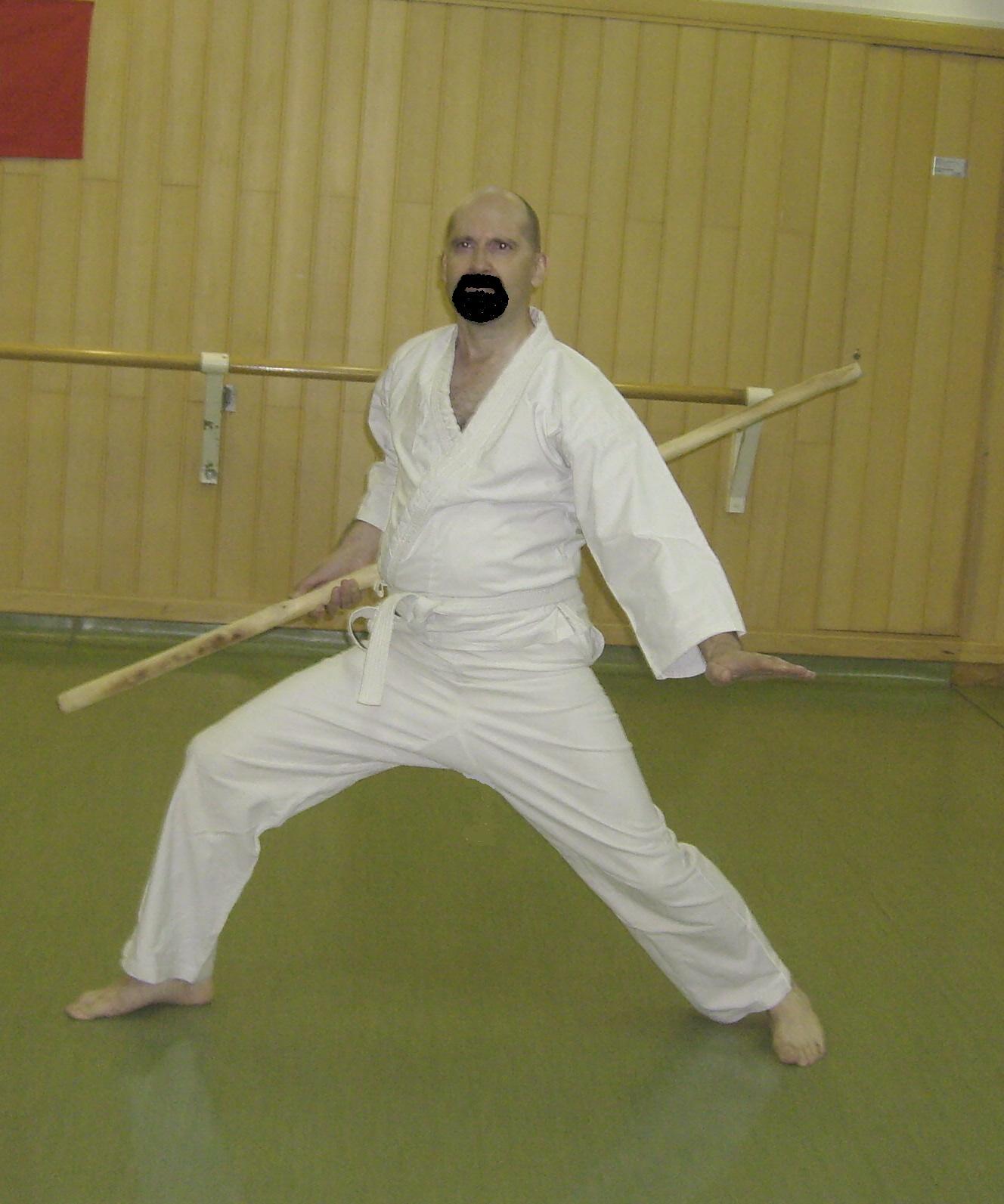INTRODUCTION
Welcome to "Tarareine", the
website established by the Federation of the Lusitanian Stick Game (Goinomixun
Leukuir ke Tarareine), Staff Combat or Stick-fencing, the "Tarareine",
to foster the development of this fascinating, ancient, traditional and
stunningly effective Lusitanian martial art. We hope you enjoy this introduction
to Tarareine or The Art of the Saff, the "Lusitanian Way" of
fighting, at full speed, and full contact. We invite you to explore it
here on this page, in person. This presentation is but a very pale idea
of the versatility of the staff in the hands of a real Master.
What is Tarareine? Literally Tarareine means "the Art of the Staff", or the Art ("Areine" in Lusitanic language) of the Stick ("Tara" in modern Lusitanic), a Lusitanian martial art using wooden sticks. Please do not confuse the Lusitanian Stick Game (Tarareine) with the Portuguese Stick Game (Jogo do Pau), they are different martial arts in Portugal, but very similar. Although a reconstructed and modern martial art, the Tarareine can be traced back accurately to the 4th Century before Christ, when Lusitanian warriors (and shepherds with their sheep-hook) fought invaders with swords and falkatas, or when they fought among them in bloody martial games. The approximately 5 feet long wood traditional staff, approximately the height of the player, as a fighting style employing a simple staff, in techniques of attack and defence, was born in the Central part of Portugal, in the Beiras region, or more exactilly, in the native region of Lusitania. Basicly the Art is a stick (or a staff) used by Lusitanian priests (paganists) as a training tool and self-defense weapon. We have developed it into an aerobic, competitive art suitable for mental, spiritual and physics health, and personal self defense too. The Art, Tarareine, belongs to the modern Lusitanian Martial Arts system, the Kingiutari too.
In the past, Human beings have always had to fight to survive and men have always employed tools. The simple stick was almost certainly among the first tools to be turned to martial purposes, as an instrument of attack and defence against wild animals first. As societies evolved from nomadic hunting, conflicts arose; competion over territories and resources, etc. boiled over into personal combat, and people created series of specific movements, attacks and defences, with their utilitarian sticks. The specific nature of these actions depend on geographic conditions, as well as ethnic, cultural, and other factors. This new fighting technique varied not only by country, but also by the length of the stick or staff most commonly employed. Few stick fighting methods were developed for staves over two metres in length. Asiatic forms of stick-fighting included training and combat with a wide variety of wooden weapons, of different lengths and timbers. Other forms, such as the Europeans, and employed robust hardwood staves, requiring management with both hands; as with the English Quarter-staff or the Portuguese Jogo do Pau. However, the different techniques used for the diverse lengths of staff are very similar, largely inspired by the Indian style. The various stick fighting styles and the combative matrix that they define the degree to which agonistic agression is related to a fundamentally ludic or sporting approach. The great difference bettween Occidental and Eastern styles lies in the mentality with that they practise their techniques. The Lusitanian stick makes a bridge between them both Occidental (Europe) and Oriental (Asia). Actually, the modern Lusitanian stick, the Tarareine, although an European style it searches for oriental roots through a spiritual attitude and practice.
In Portugal one very rich technique was developed, adapted to a type of wood known as crook (o varapau). As with the development of staff weapons, the stick was also part of the normal equipment of the field-worker, used as a walking stick or hiking staff and as an elementary weapon of selfdefence itself against the agression of some people and beasts. Based on a disciplined training regimen and solid kinesthetics, the art is dynamic, flowing and based in a broad technique of movements with multiple directions and it is effective against multiple attackers. It can be practiced in shirt-sleeves to develop full-contact practice and competition are available using state-of-the-art body defenses in sporting games, but for now, it is forbidden outside our religious and ethnic Lusitanian community.
The current art (Tarareine) was established and structured in 2001 by (Master) Endobelis Ampilua, a Lusitanian pagan priest, whose knowledge of some other martial arts, portuguese and eastern, provided the framework and inspiration for the upswell and interest of the art. He is working to develop this art within our Lusitanian community, offering seminars, teaching classes, and organizing tournaments in whole Lusitania, the central region of Portugal, but only for Lusitanian community, not the portuguese one.
This art is still very young in Lusitania, with several dozen practitioners, but we welcome other Lusitanian people (young and old) to explore further both here in the portuguese and on the Lusitanian website, where you will find some clips, and in the future, a larger gallery of images and video. But the most important is the effective practice of the art. During the summer of 2007, Endobelis Ampilua will be in some Lusitanian farms and communities of Beiras (Lusitania) giving several seminars, including tournaments. For now, enjoy your curiosity with some photos, but if you want to know the real Art of the Lusitanian Staff, the Tarareine, please contact us through one of our communities in Lusitania (Beira), and as the traditional Lusitanian greeting for the art goes, "Happy blows!".
